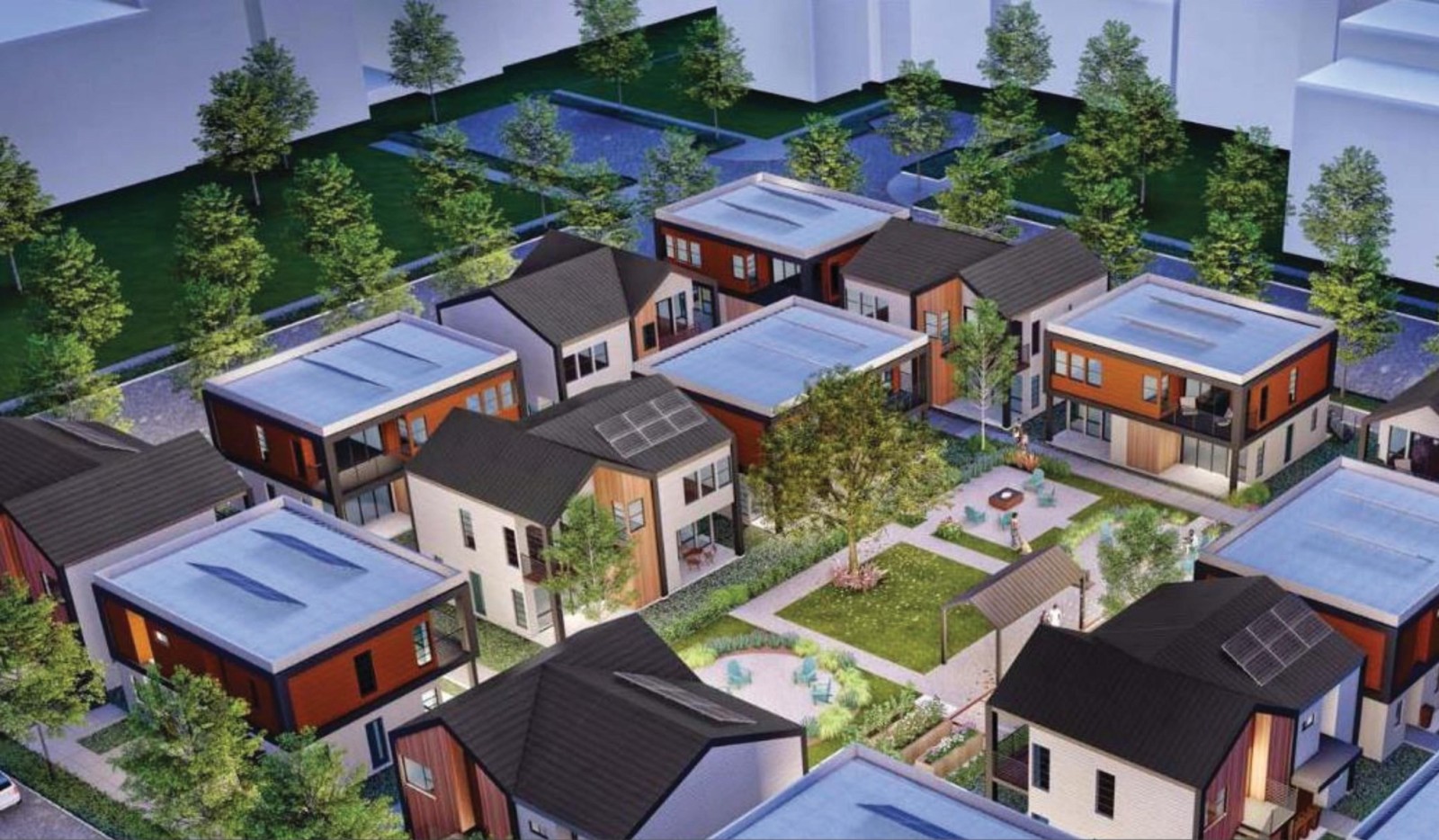
This week SMa.r.t. will have as guest columnist Mark Borenstein. Mark is a long-time Santa Monica resident, a retired attorney, an expert in judicial matters, and teaches law at USC Gould School of Law. He is writing this week about state housing laws and their interaction with, and potential impacts on, single-family zoning within Santa Monica, and how the current city council is considering modifications to the state law, having the potential net result of effectively eliminating the R-1single family zone.
SB9, a statewide law, was designed to expand opportunities for families to create moderate-income housing for relatives and friends, and to build wealth from their R-1 parcels. The author of the state law said at the time the law was passed that SB9 was focused on homeowners, affordable housing units, and multigeneration wealth creation by building equity from splitting R-1 lots into two parcels. Real estate developers and speculators were never part of the SB9 law.
The primary legislative tool to insure SB9 encouraged family development, not real estate speculation, is the owner occupancy requirement built into the SB9 law. That provision requires a homeowner to live in one of the newly built SB9 housing units as the homeowner’s principal residence for three years after approval of an SB9 lot split. According to the state Housing and Community Development (“HCD”) agency, owner occupancy also means that only a person who owns the lot, not a corporation, can use SB9’s streamlined city approval process. A corporate SB9 owner “cannot legitimately claim intentions of residing in one of the units as its principal residence since [corporations] do not physically reside anywhere.”
Now, three City Councilmembers (Zwick, Zernitskaya, and Hall) propose to fundamentally change Santa Monica’s SB9 Ordinance, by “removing the owner-occupancy requirement for lot splits … and clarifying that vacant or demolished parcels… are eligible for lot splits…” Their resolution is currently on the City Council Agenda for the May 13, 2025, Council meeting. According to a Public Records Act request to the City, these two changes were recommended by Stephen Anderson, who is the corporate representative of the two SB9 developments in Santa Monica, proposed by Delaware corporations.
The Council should reject the suggested SB9 amendments. They are not good housing policy for the City and its residents. The amendments will instead allow out-of-state developers to build expensive multi-family units in R-1 zones. They will also boost the prospects of Mr. Anderson’s corporate SB9 projects in Santa Monica.
SB9 achieved the goals of increasing affordable housing, creating homeowner wealth, and preventing corporate real estate speculation by requiring owner occupancy. In exchange for requiring owner occupancy, families receive streamlined City permit approval and less onerous City construction requirements. Owner occupancy also prevents corporations from building market-rate multi-unit complexes, inconsistent with the scale of R-1 neighborhoods, and incompatible with the low- and moderate-income housing Santa Monica needs.
The owner occupancy mandate also helps build multigeneration family wealth. SB9 “provides flexibility for multigenerational housing by allowing homeowners to build a modest unit on their property so that their aging parent or adult child can have an affordable place to live. SB 9 expands opportunities for existing homeowners to build equity while also creating new homeownership opportunities for those locked out of the market.” By eliminating owner occupancy, the Council will encourage the exact opposite. Out-of-state corporate developers will reap the financial rewards under SB9, not family homeowners.
There is no good policy reason to eliminate the owner occupancy requirement. In fact, it would be illegal to abolish owner occupancy since state law requires that a local ordinance implementing SB9, like Santa Monica’s, must include owner occupancy. Changing the local ordinance will invite another lawsuit against the City, at a time when the City can ill afford another court case. These changes will also encourage HCD, which has enforcement authority over SB 9, to consider finding Santa Monica once again is out of compliance with the City’s Housing Element objectives.
The “clarification” that SB9 can be used to subdivide a vacant lot is not a clarification at all. It is an overt change from the City’s prior policy. When SB9 was first passed, the City Planning Department Director concluded “in no case could a vacant lot (i.e. no existing dwelling units on the lot) be subdivided under SB9 due to SB9’s requirement that the applicant occupy one of the units as their principal residence for three years from the approval of the lot split.” Since lot split approval will occur long before any housing is constructed on a vacant lot, a homeowner cannot possibly occupy an unbuilt housing unit as the owner’s principal residence for three years from approval of the R-1 lot split.
Nor is the “clarification” concerning vacant land mandated by any new state laws, as the proponents claim. There are no changed circumstances either since the SB9 ordinance was adopted, and no public interest reason to alter the local ordinance now.
There is only one SB9 project on vacant land in Santa Monica: Mr. Anderson’s corporate venture on Stanford Street, by Stanford Del Mar LLC, a Delaware corporation. According to a Public Records Act response by the City, there are no other vacant R-1 lots suitable for an SB9 lot split development in Santa Monica.
There seems to be only a single reason for removing owner occupancy from Santa Monica’s SB9 ordinance and “clarifying” the vacant land exclusion: To boost the prospects of one developer, Stanford Del Mar LLC, which intends to build a high-end, market rate 8- or 10-unit development on a vacant R-1 lot located on Stanford Street.
It is not in the public interest to change local law to favor one out-of-state corporate developer. This is especially so when the proposed changes to Santa Monica’s SB9 ordinance will not promote any of policy objectives of SB9: to allow homeowners to build affordable housing units for relatives to create multigenerational wealth.
The current SB9 ordinance is a success. There are eight SB 9 projects in Santa Monica. Together, they propose to create about 20 new housing units. SB9 was never intended to create large numbers of expensive, developer-driven housing units. It had a more modest objective to help families build small developments on their R-1 lots. Owner occupancy and the prohibition on vacant land lot splits ensure that SB9 is confined to its original purposes. As the Planning Commission recently suggested, the City Council should not tinker with the current SB9 ordinance.
We at SMa.r.t. want to thank Mark for his addressing this very important issue and reaching out to inform the residents of the potential and significant impacts the local council decision can, and may, have on your neighborhood’s livability. We encourage residents to stay informed and be pro-active in helping direct the City Council to listen to and represent the will of the residents, not just developer interests.
Santa Monica Architects for a Responsible Tomorrow
Dan Jansenson, Architect, Building & Fire-Life Safety Commissioner; Robert H. Taylor, Architect AIA; Thane Roberts, Architect; Mario Fonda-Bonardi, Architect AIA (ex-Planning Commissioner); Sam Tolkin, Architect, Planning Commissioner; Michael Jolly ARECRE; Jack Hillbrand, Architect AIA, Landmarks Commissioner; Phil Brock (ex-Mayor); Matt Hoefler, Architect AIA
For previous articles, see www.santamonicaarch.wordpress.com/writing












